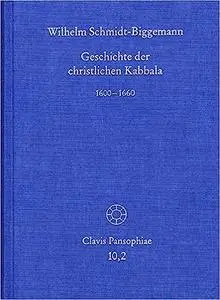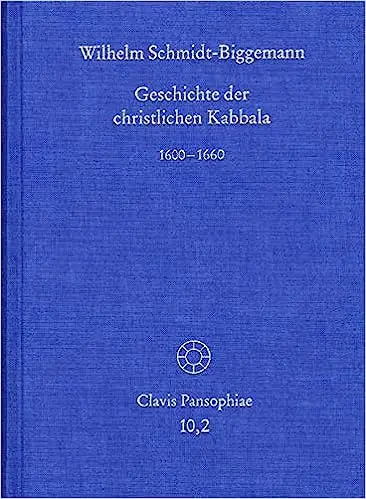Wilhelm Schmidt-Biggemann, "Geschichte Der Christlichen Kabbala. Band 1: 15. Und 16. Jahrhundert"
Deutsch | 2012 | ISBN: 3772825699, 3772825419, 3772825702 | PDF | pages: 714 | 26.1 mb
Deutsch | 2012 | ISBN: 3772825699, 3772825419, 3772825702 | PDF | pages: 714 | 26.1 mb
English summary: The first volume deals with the foundation of the Christian Kabbalah from the late Middle Ages up until the end of the 16th century. This volume begins with the basic prehistory of this doctrine ranging from Maimonides to Nikolaus von Kues. Giovanni Pico della Mirandola and, above all, Johannes Reuchlin provide the actual conception of the main topoi. The Christian Kabbalah becomes a downright fashionable science: the Roman cardinal Aegidius of Viterbo, the Venetian Minor and prior Giorgio Veneto (Zorzi), the imperial and electoral doctor Agrippa of Nettesheim as well as the Franciscan Arcangelo da Borgonovo from Bologna further developed the Kabbalistic concepts and positions. The French philologist and prophet Guillaume Postel was the intellectually dominating figure throughout the second half of the 16th century. The concluding chapters are dedicated to the Spanish spiritualist Luis de Leon and to Johannes Pistorius, editor of the influential collection Ars Cabalistica (1587). Thus, this volume brings together all important authors of the Christian Kabbalah during the Renaissance. German description: Der erste Band behandelt die Grundlegung der christlichen Kabbala vom Spatmittelalter bis zum Ende des 16. Jahrhunderts. Die Vorgeschichte dieser Lehre zwischen Maimonides und Nikolaus von Kues leitet den Band ein. Die eigentliche Fassung der Haupttopoi geschieht bei Pico della Mirandola und vor allem bei Reuchlin. Im 16. Jahrhundert wird christliche Kabbala geradezu Modewissenschaft: Aegidius von Viterbo, Giorgio Veneto (Zorzi), Agrippa von Nettesheim, Arcangelo da Borgonovo entwickelten die kabbalistischen Positionen und Begriffe weiter. Die intellektuell dominierende Figur in der zweiten Halfte des 16. Jahrhunderts war der franzosische Philologe und Prophet Guillaume Postel. Die Schlusskapitel sind dem Luis de Leon und Johannes Pistorius, dem Herausgeber der einflussreichen Sammlung Ars Cabalistica (1587), gewidmet. Dieser Band vereinigt mithin alle irgendwie wichtigen Autoren der christlichen Kabbala in der Renaissance.



